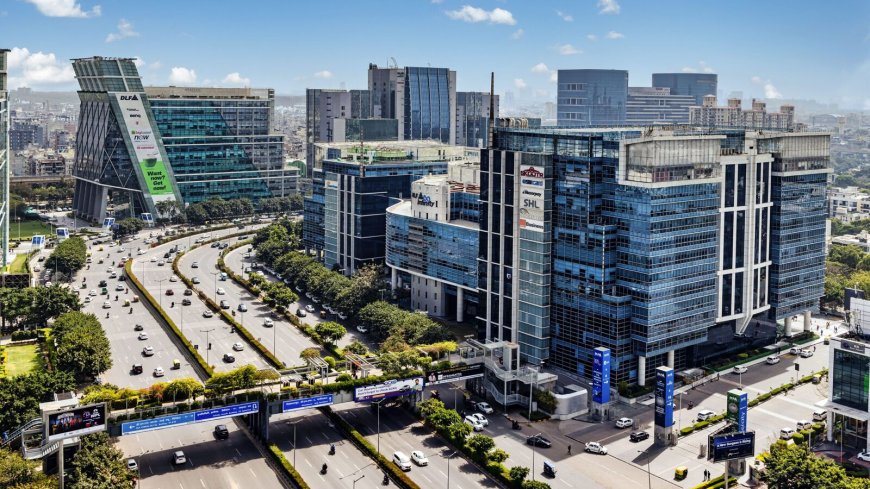Why DLF Is Walking on Eggshells Beyond Gurugram, Its Home Turf
DLF, India's top real estate giant, is expanding cautiously beyond Gurugram. Explore why the developer is wary of aggressive forays outside NCR despite booming markets.

DLF’s Calculated Foray Beyond Familiar Ground
DLF Ltd, India’s most prominent real estate developer with a market capitalization exceeding ₹1.75 lakh crore, is showing signs of nervous caution as it eyes markets outside Gurugram — its traditional stronghold. Despite a booming property market across India’s top cities, DLF’s expansion beyond the National Capital Region (NCR) remains deliberate and limited in scale.
For a company that has virtually reshaped the skyline of Gurugram and built some of the most iconic residential and commercial assets in north India, this cautious strategy raises eyebrows. Is DLF being prudent, or is it missing out on opportunities?
Sticking Close to Home
DLF’s decades-long dominance in Gurugram stems from a deep land bank, robust infrastructure linkages, and political familiarity. The company owns over 200 million sq. ft. of development potential in NCR, including its ultra-luxury properties in DLF Phase I to V and Golf Course Road.
“DLF’s real moat is its massive land bank in Gurugram,” said Anubhav Gupta, Head of Real Estate Research at Emkay Global. “It enjoys better margins, execution ease, and quicker approvals there. It’s like their backyard — everything’s familiar.”
As a result, nearly 80% of the company’s ₹14,800 crore sales bookings in FY24 came from Gurugram-based projects such as DLF Privana South and DLF Arbour, a luxury housing project that sold out in days.
The Risk of Over-Concentration
But even as Gurugram’s luxury housing market thrives, industry experts warn of over-dependence.
“DLF needs to de-risk geographically. Any policy change or slowdown in NCR can heavily dent its financials,” said Shobhit Agarwal, MD & CEO, ANAROCK Capital. “Diversity in location is not just strategic, it’s essential.”
Some signs of this shift are emerging. DLF has projects in Chennai (DLF Commanders Court, DLF Garden City) and has recently announced a foray into Goa and Mumbai. However, most of these are joint ventures or limited-scale projects — far from the kind of dominance it enjoys in Gurugram.
Challenges Outside the NCR
DLF’s hesitation in spreading its wings more aggressively isn’t without reason.
-
Land Acquisition Hurdles: Unlike Gurugram, where it owns land bought decades ago, acquiring fresh land parcels in cities like Mumbai, Pune, or Hyderabad is costly and complicated.
-
Regulatory Maze: Each state has different RERA regulations, approval timelines, and local development norms. For a company used to dealing with Haryana authorities, replicating its model elsewhere requires time and trust-building.
-
Local Competition: Markets like Mumbai are already crowded with entrenched developers like Lodha, Oberoi, and Godrej Properties. “Brand DLF has recall value, but not the same edge in every city,” said Pankaj Kapoor, Founder, Liases Foras.
What’s the Strategy Then?
DLF appears to be following a conservative expansion model that prioritizes joint ventures and asset-light approaches in unfamiliar territories.
In Mumbai, it has entered into a development management agreement (DMA) model — where it lends its brand and expertise to projects without fully investing in land or development. This reduces capital risk while still capturing premium margins.
In Goa, DLF plans a luxury villa project aimed at NRIs and HNIs. “We’re moving selectively into high-margin, high-demand markets with a very clear customer profile,” said Aakash Ohri, Joint MD & Chief Business Officer, DLF Home Developers.
The company is also reportedly in talks for more residential projects in Bengaluru and Pune but is waiting for demand-supply dynamics to align.
Investors Take Notice
Despite limited geographical spread, DLF’s stock has surged over 100% in the past 12 months, supported by strong sales, better cash flows, and robust guidance. The developer reduced its net debt to ₹57 crore in FY24 — almost debt-free.
Still, analysts urge caution.
“DLF’s execution is best-in-class, but if it continues to rely solely on NCR, the growth ceiling could emerge faster than anticipated,” said a Kotak Institutional Equities report. “Pan-India presence is necessary for longevity in a cyclical sector.”
The Outlook: Slow but Strategic
DLF’s path forward appears to be slow, selective, and strategic. While it isn't in a hurry to dominate other metros, the company is carefully testing waters — without stretching its balance sheet or brand.
In a sense, it is walking on eggshells — aware of the risks of expansion but equally aware of the perils of standing still.
For investors, the story will be less about explosive geographical expansion and more about how well DLF can maintain its premium positioning, margins, and brand value while gradually diversifying. In the unpredictable real estate landscape, that might be the wisest way forward.
What's Your Reaction?
 Like
0
Like
0
 Dislike
0
Dislike
0
 Love
0
Love
0
 Funny
0
Funny
0
 Angry
0
Angry
0
 Sad
0
Sad
0
 Wow
0
Wow
0













































































